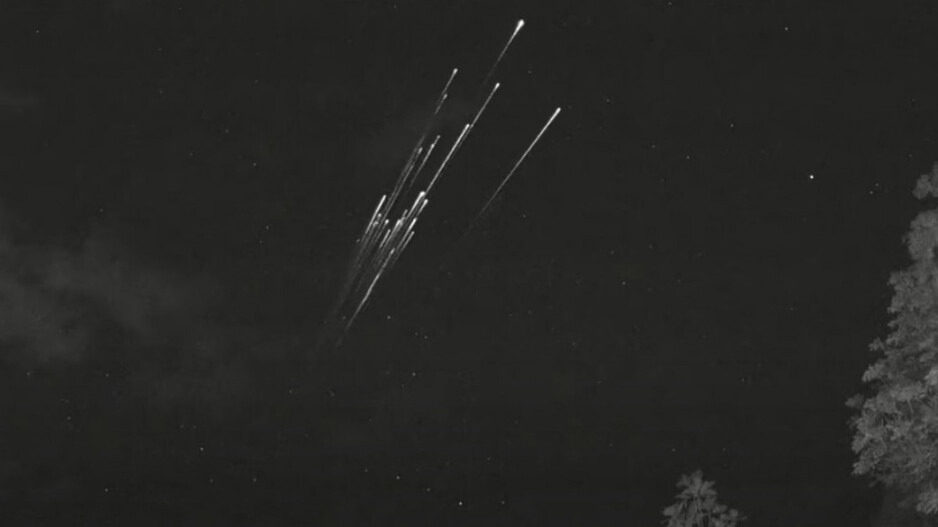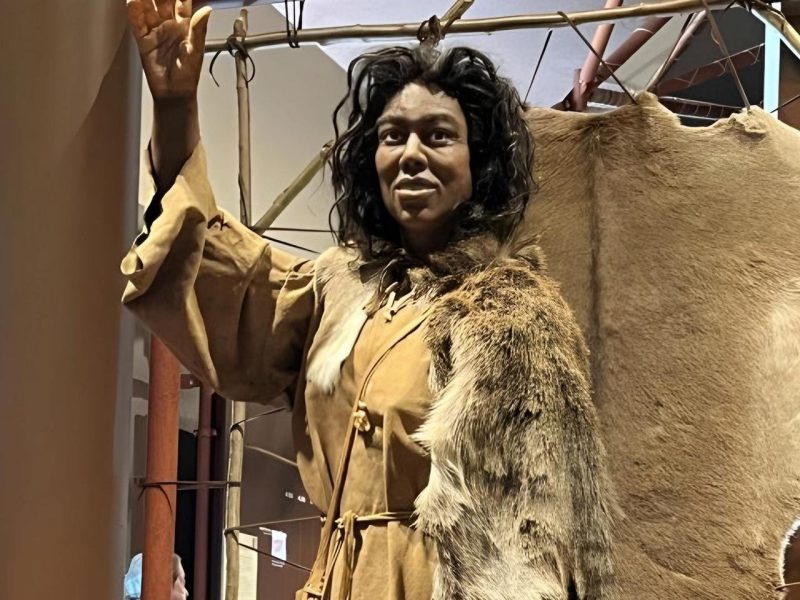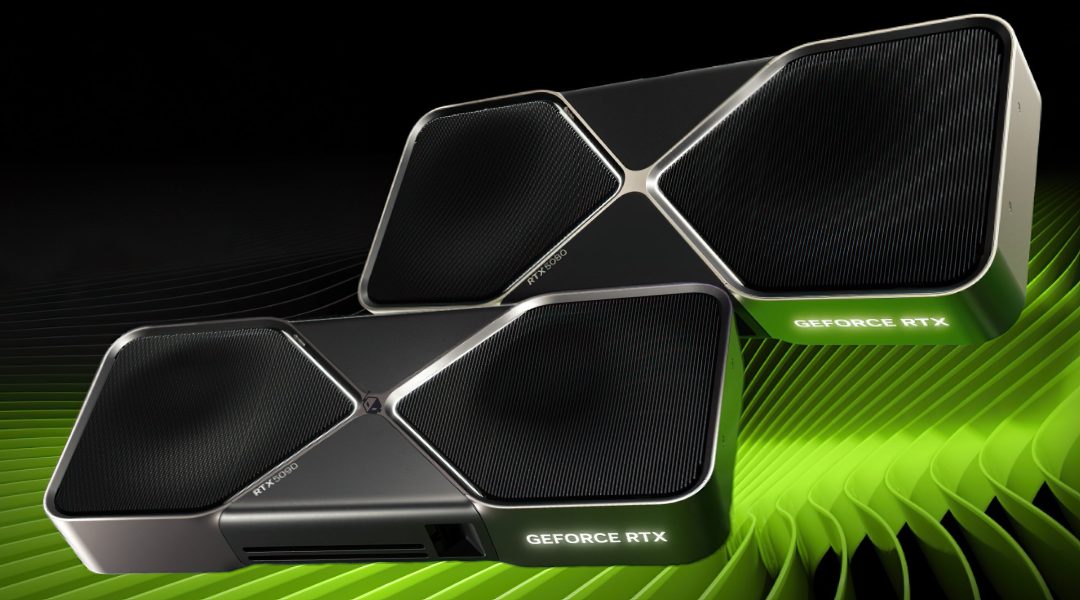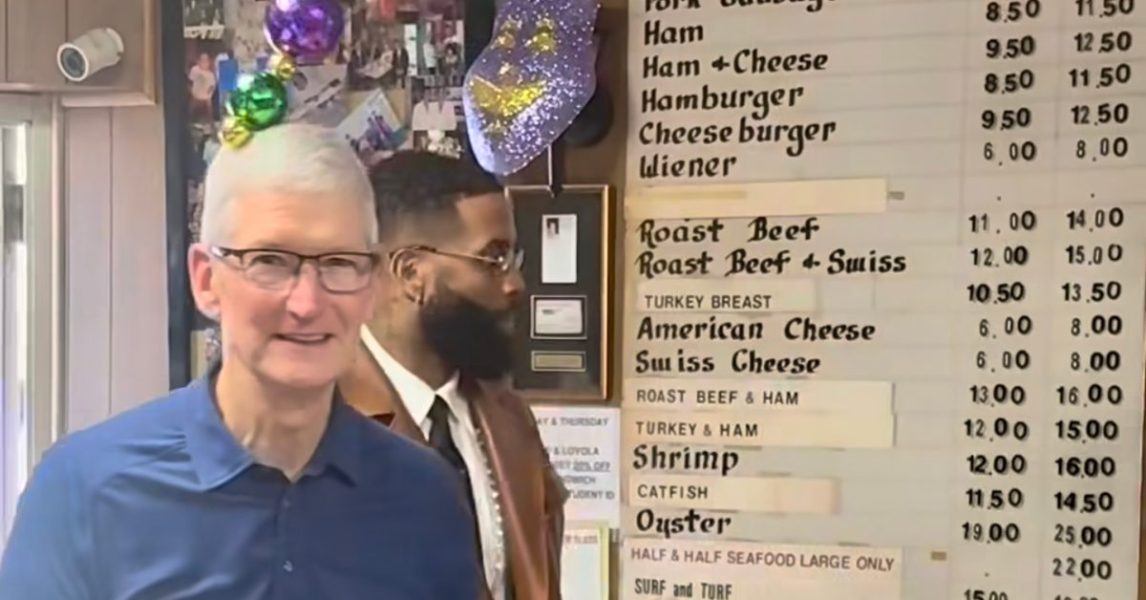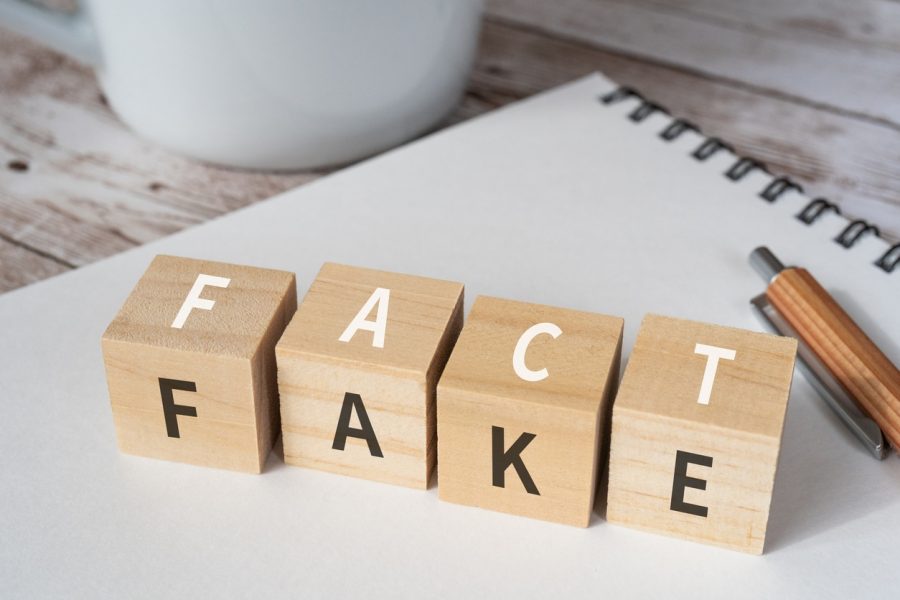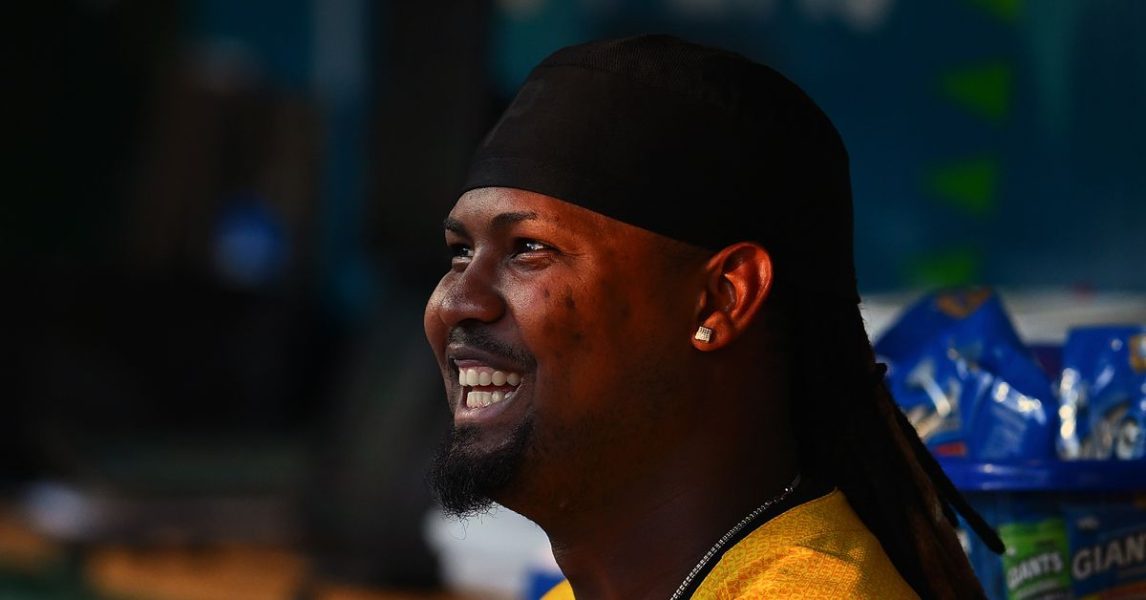Grading Every Team’s 2025 NBA Trade Deadline – Bleacher Report
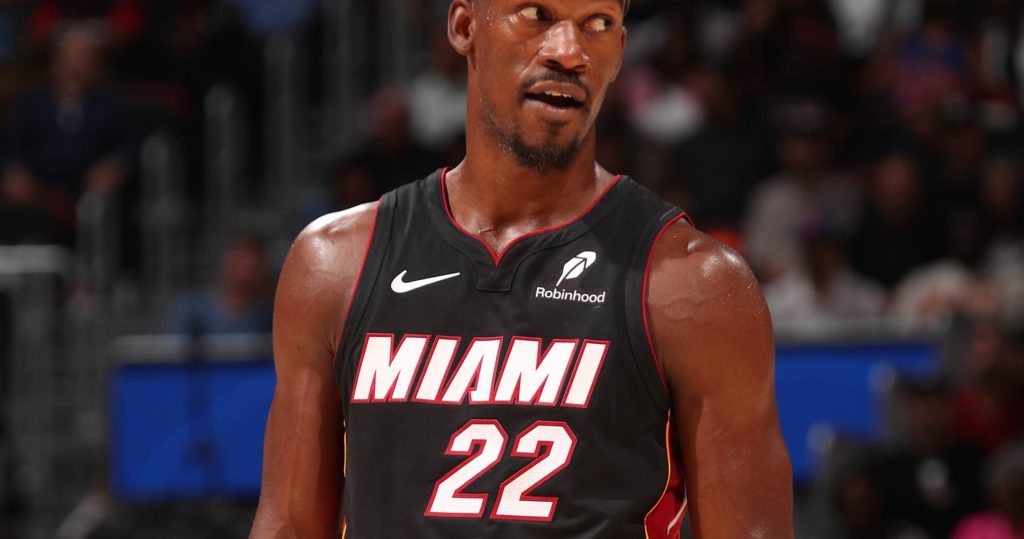
It can take years to get a full evaluation of how well teams did at the 2025 NBA trade deadline, but we’re here with letter-grade analysis mere hours after the fact.Immediate judgment is just more fun.We’ll take stock of what every team brought in and sent out, offering a wholesale view of the changes that took place. We’re grading the totality of each team’s moves. Any addition or subtraction that happened after Feb. 1 is fair game, and you can see every individual trade broken down in more detail here.We’re evaluating each team with an eye toward how well (or how poorly) they took advantage of the options available. Additionally, we’re going to consider whether the moves teams made aligned with their overall organizational goals. Rebuilders and contenders will be judged differently. Ditto for teams that had lots of flexibility and assets versus those that had relatively few.Let’s get to it.Incoming: Caris LeVert, Georges Niang, Terance Mann, Bones Hyland, 2026 first-round swap (second least favorable of UTA, CLE, own), 2028 first-round swap (second-least favorable of UTA, CLE, own)Outgoing: De’Andre Hunter, Bogdan Bogdanović, Cody Zeller, 2025 second-round pick (via MIN), 2026 second-round pick (via MEM; protected 43-60), 2027 second-round pick (via LAC), 2028 second-round pick (via HOU)The Hawks made a small bet that Hunter’s first five seasons were more indicative of his true talent than his 37 games in 2024-25 while also taking on moderately valuable swap rights and cleaning up next year’s books by sending out what would have been $23.3 million for Hunter in 2025-26 salary for Niang’s $8.2 million figure.LeVert, earning $16.6 million in the last year of his deal, will provide badly needed secondary creation to a Hawks team that doesn’t own its 2025 first-rounder and has no incentive to tank. This summer, he’ll enter unrestricted free agency.Despite giving up the best player in the deal, the Hawks did well to balance their need to remain relatively competitive while also organizing their salary structure ahead of next year. If those pick swaps yield anything at all, this trade will only look better for Atlanta.Bogdanović’s departure made the need for ball-handling and shot-creation greater. All of Mann, Hyland and LeVert can help with that.The deal that sent Bogdanović to the Clippers with the three seconds Atlanta got from Cleveland netted Mann and Hyland. Better still, that move and the salary dump of Cody Zeller on Houston allowed the Hawks to duck the tax.Incoming: 2031 second-round pick (top-55-protected; via HOU)Outgoing: Jaden Springer, 2027 second-round pick, 2030 second-round pickSpringer was one of the deadline’s most obvious trade candidates. The defending champion Boston Celtics were only giving the rugged defensive guard 5.4 minutes per game and had reason to value the nearly $16 million in salary and tax savings they’d get by offloading his $4 million contract.Though not a needle-mover by any stretch, the Celtics made the logical decision by sending Springer to Houston, attaching distant second-rounders to get it done.Incoming: N/AOutgoing: N/AThe Nets did their dealing weeks in advance of the deadline, netting a heap of second-rounders for Dorian Finney-Smith and Dennis Schroder.The only notable angle of their Feb. 6 (in)activity was the decision to retain Cam Johnson. Before superstars started changing teams earlier this week, Johnson was a good bet to be the biggest name moved. That seems quaint in the wake of deals involving Luka Dončić, Anthony Davis, Jimmy Butler and Brandon Ingram.Brooklyn can still move Johnson this summer or at next year’s deadline, and there are worse things than holding onto a 28-year-old sniper on a team-friendly deal for a little while longer. Maybe the first-round capital the Nets desire will be available down the road. Early in the rebuild process and in control of their own firsts in 2025 and 2026, the Nets can be patient.Incoming: Dalton Knecht, Cam Reddish, Jusuf Nurkič, 2026 first-round pick (least favorable of PHX, WAS, ORL and MEM), 2030 first-round swap (w/LAL), 2031 first-round pick (via LAL), 2029 second-round pick (PHX via OKC)Outgoing: Mark Williams, Cody Martin, Vasilije Mičić, 2026 second-round pick (least favorable of GSW or DEN), 2030 second-round pick (via DEN)Two legitimate first-round assets, one of which being a distant unprotected first-rounder, is quite a haul for a decent starting center with major durability issues. Williams is just 23 and averaged 15.6 points and 9.6 boards per game for the Hornets this year, but he’s missed well over half of his possible career games due to injury.A great lob threat whose rim protection fell off dramatically this season, Williams might have featured in Charlotte’s rebuild. But this was a package the Hornets couldn’t turn down.More broadly, prioritizing future draft capital confirmed management’s wise emphasis on accumulating draft assets. Charlotte is operating patiently, a welcome change from its past approach.The Hornets kept that same mentality by onboarding Nurkič to get the least favorable of the Suns, Wizards, Magic and Grizzlies’ 2026 first-rounder. All it cost them was an injured Cody Martin, Mičić and a least-favorable second in 2026.The Feb. 4 exchange of future second-rounders with the Thunder is about as innocuous as trades get, but the 2029-for-2030 swap is accounted for here because we’re completists.Incoming: Zach Collins, Tre Jones, Kevin Huerter, 2025 first-round pick (own: via SAS)Outgoing: Zach LaVine, 2025 second-round pickIt’s tempting to say the Chicago Bulls should have waited until the offseason to trade LaVine if this was the best they could do. But there’s no guarantee LaVine’s value would trend higher over the summer, even if teams might have been more willing to give up value for him with two years (instead of three) left on his deal.Despite moving LaVine, the Bulls didn’t pivot toward the rebuild so many have been begging them to undertake. Re-securing their own 2025 first-rounder from the Spurs incentivizes tanking for this year and beyond, but Chicago didn’t sell off any assets after LaVine left.It’s also not ideal that Chicago took on roughly $36 million in 2025-26 salary between Collins and Huerter. That’s only $10 million less than they would have paid LaVine next year.Incoming: De’Andre HunterOutgoing: Caris LeVert, Georges Niang, 2026 first-round swap, 2028 first-round swap, three secondsLet’s hear it for the Cleveland Cavaliers, who were playing so well (41-10, five games up on the Celtics at No. 1 in the East) that they probably didn’t need to trade for the two-way forward everyone begged them to target over the last couple of years.The Cavs went out and got one anyway, and Hunter, in the midst of a career season, might be the addition that has the biggest impact on the race for the Eastern Conference crown.Hunter is averaging 19.0 points on a 61.6 true shooting percentage, both comfortably his personal bests. Though not a shutdown stopper, he has the rangy 6’8″ frame to deter wings and forwards. Evan Mobley will still handle the toughest threats, but Hunter adds more length to offset the lack of size in Cleveland’s backcourt and also works well as a power forward.LeVert was also in the midst of his most efficient shooting season, hitting 40.5 percent of his treys. But he’s more of a shooting guard defensively.Not to be overlooked, the Cavs got themselves under tax line with this move and are really only trading the second-most favorable firsts between their own, Atlanta’s and Utah’s in 2026 and 2028.There’s downside here if Hunter can’t stay healthy or reverts to career levels on offense. But LeVert was approaching free agency anyway, and the draft capital was already owed to the Jazz.Incoming: Anthony Davis, Max Christie, Caleb Martin, 2029 first-round pick (via LAL)Outgoing: Luka Dončić, Maxi Kleber, Markieff Morris, Quentin Grimes, 2025 second-round pick (DAL), 2025 second-round pick (PHI)Even if the Dallas Mavericks were correct in taking the unfathomable risk of shorting Luka Dončić’s future, and in believing that Anthony Davis gives them a better shot at short-term success, they’d still get a failing deadline grade because of the way they went about making that gamble.As egregious as it was to give up on Dončić, a 25-year-old megastar with five straight All-NBA first-team nods and an appearance in the 2024 Finals under his belt, it was worse that the Mavs did so without creating a bidding war.By only shopping Dončić to the Lakers, Dallas assured itself of a suboptimal return. That, by the way, is the kindest description you’ll ever hear of what the Mavs actually got for a generational superstar: Anthony Davis and a 2029 first-round pick.That Dallas couldn’t even extract both of Los Angeles’ two tradable first-rounders will forever be inexcusable.Small potatoes section: The Mavs also swapped out Grimes, a restricted free agent this summer with whom they couldn’t agree on an extension, for a cost-controlled but inferior player at the same position in Martin. Dallas also gave up Philly’s own 2025 second-rounder for the privilege and jumped back over the tax line.Time will tell, but Dallas looks to have engaged in a historic level of self-sabotage.Incoming: N/AOutgoing: N/AThe moves just weren’t on the table for the Nuggets, but we knew that long before the deadline came and went.Denver couldn’t trade the large salaries of Jamal Murray or Aaron Gordon because they signed extensions over the summer, Nikola Jokić was never going anywhere, and no clear upgrade materialized for Michael Porter Jr.Would it have been nice if the Nuggets had gotten off Zeke Nnaji’s contract, upgraded the backup center spot or found a way to snag a rotation piece? Sure, but nothing of obvious value was available, and it’s hard to fault Denver for holding onto its 2031 first-rounder, the only high-value draft asset it could move.We’ll go with a slightly below-average mark to reflect mild disappointment while acknowledging that standing pat may have been the best of the Nuggets’ underwhelming options.Incoming: KJ Martin (rerouted to UTA), Lindy Waters III, Josh Richardson (rerouted to UTA), Dennis Schroder, 2027 second-round pick (MIL via PHI), 2031 second-round pick (DAL via PHI)Outgoing: 2028 second-round pickDetroit used a portion of its $14 million in cap space to absorb KJ Martin’s contract from the Sixers, netting a pair of future seconds in the bargain. It then sent Martin and Richardson to Utah with a 2028 second-rounder for Dennis Schroder, who spent about 30 seconds as a member of the Jazz.Schroder is a capable backup point guard (maybe more if you believe in what he did with the Nets earlier this year) whose $13 million comes off the books this summer. Detroit badly needs secondary playmaking next to Cade Cunningham and, perhaps more urgently, someone who can run the second-unit offense. Though he flopped in Golden State, Schroder should fill that stopgap role nicely with the Pistons.Incoming: Jimmy ButlerOutgoing: Andrew Wiggins, Dennis Schroder, Kyle Anderson, Lindy Waters III, 2025 first-round pick (top-10 protected)The Warriors took a significant swing in adding Butler while giving up only a single protected future first-rounder.Butler is aging and expensive, but has a chance to help the Warriors in the playmaking and scoring departments, particularly if he’s motivated after the way things ended for him in Miami.Golden State immediately handed the 35-year-old the two-year, $112 million extension no one but the reckless Phoenix Suns seemed inclined to. It’s hard to separate that risky decision from the trade itself, as the Warriors probably had no choice but to pay up.Butler isn’t good enough to lift this team to contention, but he’ll help. And he’ll certainly make the next couple of years interesting.Ultimately, the Warriors did something, which is all many fans were asking for. This was an objectively risky and shortsighted move, and probably not a good value proposition on balance. But this team was going nowhere anyway.If blowing things up and rebuilding was never an option (it wasn’t), this is about as well as the Warriors could have done.Incoming: Jaden Springer (waived), Cody Zeller, 2028 second-round pick (own via ATL), 2030 second-round pick (via BOS)Outgoing: 2031 second-round pick (top-55-protected)The Houston Rockets netted Springer and a 2030 second-rounder by essentially taking the 22-year-old’s $4 million salary into part of their non-taxpayer mid-level exception.Though the prospect of another rugged defender was intriguing, the Rockets determined they needed the roster spot for Zeller. Waiving Springer allowed them to add another second-rounder by absorbing Zeller’s money from Atlanta.Critics clamoring for a lower grade will need to base their takes on “road not taken” stances. Those feel unfair, as the Rockets consistently signaled they intended to let their core develop without a big-swing disruption this season.Incoming: Second-round pick (top-55-protected via TOR)Outgoing: James Wiseman, cashThe Pacers were perilously close to the tax line but got some wiggle room by dumping the injured Wiseman on Toronto. The move gives Indy an open roster spot it could fill on the buyout market.Nothing fancy here. Just a small move to save money under the tax and free up some flexibility.Incoming: Drew Eubanks, Patty Mills, Bogdan Bogdanović, 2025 second-round pick (MIN via ATL), 2026 second-round pick (MEM via ATL; protected 43-60), 2027 second-round pick (own via ATL)Outgoing: PJ Tucker, Mo Bamba, Terance Mann, Bones Hyland, 2030 second-round pickTucker’s expiring $11.5 million was the textbook definition of dead money, as the 39-year-old hasn’t been with the team all season. Swapping him and Bamba, who was later waived, for Eubanks and Mills saved the LA Clippers about $6.5 million.Eubanks is an upgrade over Bamba, which should allow LA to give starting center Ivica Zubac more frequent breaks. Big Zu has been durable, playing at least 72 games in four of the past five seasons, but he’s averaging a career-high 32.0 minutes per game in a breakout campaign. Added bonus: Eubanks’ $4.8 million salary is non-guaranteed next year.Bogdanović is in the midst of a down year, but he’s not so far removed from last season’s fifth-place finish in Sixth Man of the Year voting. If he can get right physically, he’ll offer the Clippers a desperately needed spot-up shooter and playmaker. Getting three seconds along with him in the deal that sent Mann and Hyland to Atlanta is just gravy.Incoming: Luka Dončić, Mark Williams, Maxi Kleber, Markieff MorrisOutgoing: Anthony Davis, Dalton Knecht, Cam Reddish, Max Christie, Jalen Hood-Schifino, 2029 first-round pick, 2030 first-round swap (w/CHA), 2031 first-round pickDavis is an All-NBA big man who might have been the best player on the Los Angeles Lakers’ 2020 championship team, but the trade that sent him out in a package for Dončić will still be the one against which we measure all future heists.Dončić’s conditioning issues might be worth worrying about, but the Lakers would still have been justified in giving up everything they had to get him. In the end, all it took was Davis, Christie, Hood-Schifino (whose option for next year the team had already declined) and a 2029 first-rounder.It’ll forever baffle NBA scholars that Dallas didn’t pry away Los Angeles’ 2031 first, Austin Reaves, the draft rights to LeBron James’ unborn grandchildren and at least $2 billion in cash.What else is there to say? The Lakers secured a 25-year-old superstar who’ll probably win an MVP or two, and it cost them a soon-to-be 32-year-old with a legitimate history of durability issues.We have the Mavs to thank for L.A.’s other acquisition, oft-injured but talented center Mark Williams. If healthy, he’ll be a devastating lob threat for Dončić. The Lakers had better hope his rim protection improves, as they paid a high price with a pair of first-round assets and Knecht heading to Charlotte.Even if that deal is a little iffy, there’s no way to knock the Lakers’ grade down.Incoming: Marvin Bagley III, Johnny DavisOutgoing: Marcus Smart, Jake LaRavia, 2025 first-round pickFirst, a nice thing we can say about Memphis’ deadline: The Grizzlies can sell disgruntled fans on freeing up some money to make Jaren Jackson Jr.’s next contract fit a little more neatly under the tax.If you’re not moved by that, it’s probably because Memphis otherwise cut costs and blew draft assets to trim payroll. The most egregious move was shipping off a first-rounder to unload Marcus Smart, a player that cost two first-rounders to acquire in the first place.If the Grizzlies really wanted to get off Smart’s deal, why not wait until the offseason? It’s conceivable he could have gotten healthy and helped the rotation. LaRavia is another useful player Memphis just threw away for a second-rounder and flotsam.The Grizzlies are a contender in the West. This isn’t how teams at that level are supposed to act.Incoming: Andrew Wiggins, Davion Mitchell, 2025 first-round pick (via GSW; top-10-protected)Outgoing: Jimmy Butler, Josh Richardson, second-round pickThe Heat held strong and found a buyer willing to give up real assets for Jimmy Butler, snagging Andrew Wiggins and a 2025 first-rounder from the Warriors. That’s a strong return for a player who a) was probably never going to play for Miami again, and b) had very few interested suitors.Wiggins might be a better dollar-for-dollar value than Butler on his own, as the two-way wing is six years younger and under contract for $28.2 million next season ($30.1 million in 2026-27).Though it’s unlikely to matter, the pick Miami netted for Butler could become immensely valuable. It comes with top-10 protection in 2025 and 2026 but is fully unprotected in 2027 if not conveyed in either of those two drafts.The smaller move that re-routed PJ Tucker and a future second-rounder to the Raptors for Davion Mitchell got the Heat below the luxury tax.Incoming: Kyle Kuzma, Jericho Sims, Kevin Porter Jr., Patrick Baldwin Jr. (re-routed to San Antonio with cash), 2025 second-round pick (most favorable w/WAS)Outgoing: Khris Middleton, AJ Johnson, Delon Wright, MarJon Beauchamp, 2028 first-round swap (to WAS)The Bucks got younger and cheaper by swapping out Middleton for Kuzma, and there’s something to be said for that given Milwaukee’s general lack of athleticism and two-way punch.The Bucks also dipped under the second apron with the Middleton deal while cutting their luxury tax bill by roughly $30 million, depending on how much Kuzma reduced his trade bonus. The declining structure of Kuzma’s contract offers even more future savings. While Middleton (player option) could have returned for $34 million next year, Kuzma will collect just $21.5 million in 2025-26 and $19.4 million the following season.Given Middleton’s limited availability and likely continued decline, Kuzma is a pretty substantial dollars-to-production upgrade. It’s not ideal to punt on Johnson, Milwaukee’s most recent first-rounder, but he hadn’t shown much in the G League. Likewise, the 2028 first-round swap the Bucks surrendered isn’t even sure to matter as the Wizards’ rebuild will be four years deep by then.If he can add some interior defense and energetic rebounding, Sims could help a Milwaukee reserve corps that gets hammered on D whenever Lopez is out of the lineup. Wright was shooting 24.5 percent from three, rendering him basically unplayable for a Bucks team that needs some offensive punch from its wings.Porter Jr., acquired from the Clips for Beauchamp, will bring major athletic punch and improved backcourt defense in a limited role.Incoming: N/AOutgoing: N/AAt least Minnesota didn’t make another financially motivated trade that hurt the product on the floor. The offseason deal that turned Karl-Anthony Towns into Julius Randle and Donte DiVincenzo accomplished that, and fans probably should have been concerned more of the same was coming.That could have taken the form of sending away Naz Reid and Nickeil Alexander-Walker, both of whom are in line for free agency this summer. Losing either of them would have significantly weakened the rotation, particularly with both Randle and DiVincenzo currently injured.Incoming: Bruce Brown, Kelly Olynyk, 2026 first-round pick (IND via TOR; top-four-protected), 2025 second-round pick (via IND), cashOutgoing: Daniel Theis, 2031 second-round pick (least favorable of ORL and NOP)If the Pelicans had traded Ingram 18 months ago, they would have gotten more than a single first-rounder and a package headlined by Brown’s expiring salary. But New Orleans lacks a time machine and ended up doing pretty well given the circumstances.Ingram had been on the block since last summer, and teams were reluctant to part with real assets for a soon-to-be free agent desirous of a max-level contract. If the alternatives were letting Ingram walk for nothing in free agency or hoping to recoup some value in a sign-and-trade (which would require Ingram playing ball), the package New Orleans got from Toronto is solid enough.The Pels are also one of the few teams that can justify taking on Olynyk’s contract, which will pay him $13.9 million in 2025-26. He’s a severely limited defender but offers the kind of spacing a team with Zion Williamson should covet.Incoming: Delon Wright, cash (MIL)Outgoing: Jericho SimsSims was expendable for a Knicks team that should get Mitchell Robinson back sooner than later.Wright had made less than a quarter of his threes with the Bucks and was barely playing, but he’s theoretically a two-way contributor on the wing who can handle the ball a little in the event Cam Payne or Deuce McBride misses time.Both players were on minimum deals, and just for completeness’ sake, this transaction was technically looped into the larger trade that sent Kyle Kuzma to the Bucks for Khris Middleton.Incoming: Daniel Theis (waived), 2031 second-round pick (least favorable of NOP and ORL), 2030 second-round pick (DEN via CHA)Outgoing: 2029 second-round pick (via PHX), cashThe swap with Charlotte that sent out a 2029 second-rounder for a 2030 second-rounder felt like GM Sam Presti was messing with us. No additional assets or cash was exchanged in this deal. It was merely a bet by the Thunder that the Nuggets’ distant second-rounder would be slightly more valuable than the Suns’ slightly less distant one.Considering how much transactional success Presti and the Thunder have had, we should assume he’s right.OKC also landed a deep-bench center in Theis, who would have filled a position of need, but it waived him shortly after the deadline. With Chet Holmgren’s return on the immediate horizon, that decision is easier to understand.The Thunder wind up with a slightly below-average mark because they had the resources to make an upgrade for their championship push but didn’t.Incoming: N/AOutgoing: N/AFew teams had a clearer need than the Orlando Magic, whose three-point shooting percentage is on pace to be the worst of any team in the last decade.Despite that glaring issue, Orlando stood pat.The Magic have correctly bet on organic growth over the last couple of seasons, making small moves on the margins rather than packaging up draft capital and some of their young pieces in search of big upgrades.That strategy is starting to get stale, though injuries to Paolo Banchero and Franz Wagner might provide some cover. Orlando can argue its chances of making real noise this season are slim, as it currently sits at No. 8 in the East. Maybe there’s some sense in waiting until the offseason to make a move.Still, the Magic had an obvious need for offensive juice and didn’t acquire anyone. That’s disappointing.Incoming: Quentin Grimes, Jared Butler, 2025 second-round pick (own; via DAL), 2027 second-round pick (most favorable of GSW and PHX; via WAS), 2028 second-round pick (GSW via WAS), 2030 second-round pick (most favorable of PHX and POR via WAS), 2030 second-round pick (via WAS)Outgoing: Caleb Martin, KJ Martin, Reggie Jackson, 2026 first-round pick (least favorable of OKC, HOU, LAC), 2027 second-round pick (via MIL), 2030 second-round pick, 2031 second-round pick (via DAL)Grimes’ 39.8 percent three-point clip and 10.2 points per game are both better than Martin’s 37.9 percent and 9.1 points per game, respectively. Philly’s new wing is also five years younger than Martin, not to mention cheaper at $4.3 million. Martin is on the books for $8.1 million this year, with three more seasons left on the four-year, $40 million pact he signed with the Sixers over the summer.Grimes is ticketed for restricted free agency, which raises the possibility of Philly losing him to an offer sheet it can’t justify matching. But even in that scenario, the Sixers could defend the deal on the grounds that it brought back their own second-round pick in the 2025 draft.That pick might gain extra importance if the 76ers convey their top-six-protected 2025 first-rounder to the Thunder.The KJ Martin deal hurts Philly’s grade. The Sixers signed him to an inflated contract with non-guaranteed salary for 2025-26 with an eye toward trading him for an upgrade. Instead, they spent two second-rounders to send him away in an effort to duck the luxury tax.Lastly, the Sixers sent Reggie Jackson and a 2026 first-rounder (the worst of the Thunder, Rockets and Clippers) to the Wizards for Butler and four future seconds. Considering that first-rounder will almost certainly be in the late 20s, getting four seconds is quite a haul.Incoming: Cody Martin, Vasilije Mičić, 2025 first-round pick (least favorable of UTA, CLE, MIN), 2027 first-round pick (least favorable of UTA, CLE, MIN), 2029 first-round pick (least favorable of UTA, CLE, MIN), 2026 second-round pickOutgoing: Jusuf Nurkić, 2026 first-round pick (least favorable of PHX, WAS (if 1-8), ORL and MEM), 2031 first-round pickNurkič had been out of the Suns’ plans for weeks, and the deal that netted them three iffy first-rounders from the Jazz for their own unprotected 2031 first allowed them to package him up with a 2026 selection to get Martin and Mičić.The former, if healthy, should see rotation minutes for a Suns team that needs wings. Both Martin and Mičić can come off the books after this season as well via a non-guarantee and a team option, respectively.Getting off Nurkić’s guaranteed $19.4 million in 2025-26 is a legitimate plus, and the 2026 second Phoenix got from the Hornets might not be all that far behind the first going to Charlotte. Unless all of the Suns, Grizzlies and Magic fall apart, it’ll probably be in the mid-to-late 20s.Incoming: N/AOutgoing: N/AWait a minute. Robert Williams III is still here? And Jerami Grant? Anfernee Simons, too?OK, but what about Toumani Camara, an affordable, defensively dominant forward any contender would have ponied up a first-rounder to acquire? He didn’t get traded either?It’s true that teams operated carefully when it came to onboarding bloated salaries attached to non-stars, and seeing the Grizzlies give up a first-rounder to dump Marcus Smart’s money probably gave the Blazers pause. Maybe the team’s recent run of success (9-1 heading into the deadline) convinced Portland it could climb all the way into the Play-In.Trot out all the excuses you can think of, and it still fails to excuse the Blazers’ inaction. This is a rebuilding team saddled with a few bad deals but plenty of decent ones that could have brought back future-focused assets.By sitting out the action entirely, Portland only prolonged its stay in the NBA wilderness.Incoming: Zach LaVine, Jonas Valančiunas, Jake LaRavia, 2025 first-round pick (top-14-protected; via CHA), 2027 first-round pick (via SAS), 2031 first-round pick (via MIN), 2025 second-round pick (via CHI), 2028 second-round pick (via DEN), 2028 second-round pick (own)Outgoing: De’Aaron Fox, Kevin Huerter, Jordan McLaughlin, Alex Len, Colby Jones, 2028 second-round pick (via DEN; protected 31-33), 2028 second-round pick (own), 2029 second-round pickConsidering the leverage San Antonio had after Fox made clear his plans to leave Sacramento and his desire to land only with the Spurs, the Kings actually made out pretty well here.It’s fair to quibble with Sacramento’s decision to take back a costly late-20s star in LaVine, particularly because he adds yet another offense-only starter to a franchise that already has too many of those. But unless the Kings were willing to torpedo this season by holding onto Fox and trying to trade him over the summer (which might even have produced a worse return), this is a defensible move.We all want the Kings to blow it up and rebuild, but that option might not have been available in this particular trade.Adding Valančiunas for a pair of seconds was a solid move, as the Kings’ backup center spot has been one of the least productive in the league. The breathing room they got in the Fox deal allowed the Kings to take in JV’s $9.9 million salary while only re-routing Sidy Cissoko’s much smaller deal.Lastly, Jake LaRavia is an intriguing acquisition for a low price of Len (unproductive and superfluous with Valančiunas on board), Colby Jones and a second-rounder. Memphis declined his fourth-year option, which means the Kings can offer him no more than $5.2 million in the first year of a new deal this summer, but LaRavia is a multi-skilled wing who should see real rotation action.Incoming: De’Aaron Fox, Jordan McLaughlin, Patrick Baldwin Jr.Outgoing: Zach Collins, Tre Jones, Sidy Cissoko, 2025 first-round pick (via CHA; converts to two seconds if not conveyed), 2027 first-round pick (via SAS), 2031 first-round pick (via MIN)Fox might not be the perfect No. 2 next to Victor Wembanyama, but he’s pretty close. Better still for the Spurs, he doesn’t have to be.Because the Spurs landed Fox without giving up any of their top young players—Stephon Castle, Devin Vassell, Jeremy Sochan, Keldon Johnson—or their most valuable near and mid-term first-round picks, they still have plenty of flexibility to make a future addition that knocks Fox down to third in the team hierarchy. That might be where he’ll belong as he gets later into his 20s and his game, based largely on athleticism, potentially slips.For now, Fox should thrive in the five-out looks San Antonio can deploy with Wemby spacing the floor. The 27-year-old is still one of the league’s fastest players, and he should be better able to leverage that gift without Domantas Sabonis occupying the lane. The Spurs’ transition attack should also benefit from Fox’s presence.San Antonio landed an All-Star-caliber player in his prime for a package that has just one potential high-value asset, the 2031 Wolves first-rounder. That’s a deal you make 10 times out of 10.Incoming: Brandon Ingram, PJ Tucker, James Wiseman, second-round pick (via MIA)Outgoing: Bruce Brown, Kelly Olynyk, Davion Mitchell, 2026 first-round pick (via IND; top-four-protected), 2025 second-round pickThe Raptors committed to avoiding a bottom-out stretch when they traded for RJ Barrett and Immanuel Quickly last year, so their acquisition of Ingram makes sense through that lens. Ingram wasn’t exactly in demand because potential suitors were wary of his impending unrestricted free agency and potential contract demands, and Toronto assumes that risk here.Still, Ingram is a one-time All-Star in his prime who’ll add real offensive juice to the Raptors’ attack. He’s played just 18 games this season due to an ankle injury but had quietly upped his three-point volume to a career-high 6.4 attempts per game and is an underrated facilitator who’s averaged at least 5.2 assists per game in each of the last four years.Ingram probably won’t come cheap, but Toronto surely made this deal knowing what it’d take to retain him in free agency. As a pure talent play, this was a win; the only asset Toronto will miss is that 2026 first-rounder it sent to the Pels.Brown’s deal will come off the books this summer, and Olynyk’s lack of mobility made him a negative-value contract—particularly for a team intent on making a return to the playoffs next year.On a smaller scale, swapping Mitchell for Tucker and a second-rounder from the Heat was a good use of Toronto’s remaining financial flexibility.Incoming: KJ Martin, Josh Richardson, Mo Bamba, Jalen Hood-Schifino, Dennis Schroder (rerouted to DET), 2028 second-round pick (via DET), 2031 first-round pick (via PHX), 2025 second-round pick (via LAC), 2025 second-round pick (via DAL), 2030 second-round pick (via LAC)Outgoing: Drew Eubanks, Patty Mills, 2025 first-round pick (least favorable of UTA, CLE, MIN), 2027 first-round pick (least favorable of UTA, CLE, MIN), 2029 first-round pick (least favorable of UTA, CLE, MIN)Utah basically took on unwanted money with a second-rounder attached from the Clippers and functioned as a facilitator in the Dončic-Davis deal between the Lakers and Mavs, securing two more seconds in the 2025 draft for its trouble. Tucker, after coming from the Clips, went to the Miami Heat as part of the expansive Jimmy Butler deal with the Warriors.Those are relatively small returns, but Utah didn’t give up anything of value to its plans this year or beyond.Martin, who stopped over in Detroit before coming aboard with Richardson and a 2028 second-round pick for Dennis Schroder, averaged 12.7 points and 5.5 rebounds for the Houston Rockets back in 2022-23 and could give the Jazz a shooting boost if his 38.1 percent hit rate from deep this season is for real.The more consequential Utah trade came before our Feb. 1 cutoff, but we’re including it anyway. By sending out three low-value first-rounders (least favorable of their own, CLE and MIN in 2025, 2027 and 2029), the Jazz snagged the Suns’ unprotected 2031 first-round pick. It’s possible each of those outgoing selections will fall in the mid-to-late 20s, while the upside on any future Suns pick is exceptionally high.Incoming: Khris Middleton, Marcus Smart, AJ Johnson, Sidy Cissoko, Colby Jones, Alex Len, Reggie Jackson (waived), 2025 first-round pick (via MEM), 2026 first-round pick (least favorable of OKC, HOU, LAC via PHI), 2028 first-round swap (w/MIL), 2028 second-round pick (DEN via SAC; protected 31-33), 2029 second-round pick (via SAC), 2030 second-round pickOutgoing: Kyle Kuzma, Jonas Valanciunas, Patrick Baldwin Jr., Jared Butler, Johnny Davis, Marvin Bagley III, 2025 second-round pick (least favorable w/MIL), 2027 second-round pick (most favorable of GSW and PHX), 2028 second-round pick (via GSW), 2028 second-round pick (via SAC), 2030 second-round pick (most favorable of PHX and POR), 2030 second-round pickMiddleton has little utility for the Washington Wizards on the floor but retains some as a veteran influence on the youth corps. His $34 million expiring salary (player option) next year could theoretically be flipped for another asset over the summer or at the 2026 deadline.The 2028 swap rights Washington got in the deal are a pretty speculative asset, as the Bucks may not be worse in the 2027-28 season than the Wizards. Ditto for AJ Johnson, Milwaukee’s first-rounder in the most recent draft who’s had his moments in the G League but remains a long way from factoring in the NBA.Spin it just right, and you could argue the Wizards got the equivalent of two first-rounders for Kuzma—plus whatever value Middleton might bring back down the road.Washington also turned four future seconds into a 2026 first-rounder that’ll be the worst of the Thunder, Clippers and Rockets’ selections. That probably means it’ll be in the range of the late 20s, but the Wizards had loads of seconds to spare.Another first, this time a 2025 selection from the Grizzlies, came attached to Marcus Smart’s contract, which will pay him $20.2 million this year and $21.6 million in 2025-26. Just more correct rebuilding behavior by the Wizards, who showed a willingness to absorb bad money with draft picks throughout the deadline period.The deal that sent Valančiunas to the Kings for Cissoko and two seconds is a little underwhelming, but it appears first-rounders were never on the table for the veteran center.Stats courtesy of NBA.com, Basketball Reference and Cleaning the Glass. Salary info via Spotrac.Grant Hughes covers the NBA for Bleacher Report. Follow him on Twitter (@gt_hughes), and subscribe to the Hardwood Knocks podcast, where he appears with Bleacher Report’s Dan Favale.
Source: https://bleacherreport.com/articles/10153346-grading-every-teams-2025-nba-trade-deadline
